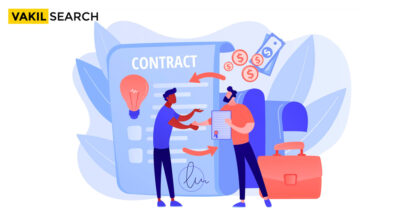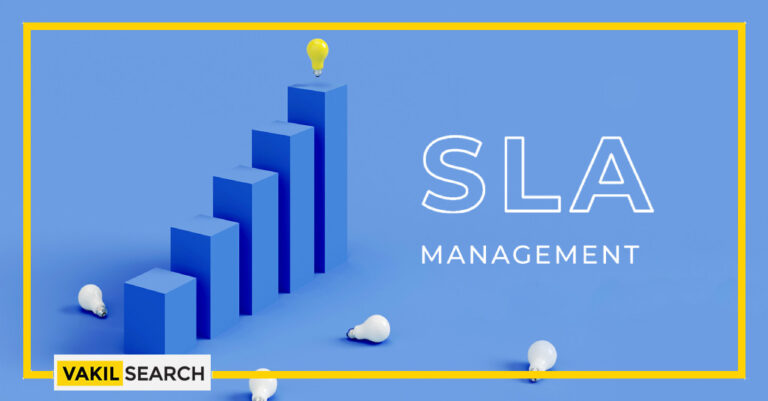A service level agreement is an agreement established between an organisation and some other foreign service provider. The agreement contains specific performance and liabilities for the associated parties. There are various types of SLAs; let's know about them.
How Does Internal SLA Benefit the Entire Company?
A service Level Agreement, also known as SLA, is an agreement between an organisation, a client, or other service providers to specify the expected level of services. These commercial agreements consist of quality standards of the services, the response time of the provider and delivery times.
These agreements can occur between an organisation and ISP (Internet Service Provider), a SAASP (Software as a service provider) or an MSP (managed Service Provider). The SLAs are necessary for establishing legal and financial guidelines between two parties. It ensures that the agreement defines the other party’s process, system and services.
The SLA became popular due to the growing use of outsourcing IT service providers. The company creates SLAs to confer the power to the clients to ensure the quality and metric of service the service provider is providing. It establishes a legal agreement between these parties.
Elements of an SLA
An SLA can be a single-page or multipage document with different service commitments and specific guidelines. An effective SLA needs some specific elements to work efficiently.
- About the service
An SLA describes the service type, the provider’s name and every necessary detail about the service to ensure mutual understanding.
- Level of service
The level or metric of service the provider promises through the agreement must be mentioned in it. In the case of an ISP (Internet Service Provider), the quantifying metric is the uptime it promises to provide.
- Liability
In order to make the agreement enforceable, some legal liabilities are bestowed upon the parties. Any liability violation can end the agreement and put you into the position to compensate.
- Penalty
If a party fails to comply with the guidelines provided by the agreement and violates any of the obligations, it can cause several types of damage to the other party. In this case, the party who violets become liable for penalty.
Importance of SLA
SLAs are essential contracts for both clients and service providers. The agreements help service providers to fulfil clients’ expectations. The clients get a clear view of the quality level of the service and on what grounds the service provider will not be liable.
It is also essential for the clients to understand the metric of service they are provided, and if the quality mismatches the promised quality, they get the right to compensate.
The service level agreements are used alongside the service agreements. When the service agreement talks about the overall aspects of the service provider, the service level agreement provides detailed information about the service.
Types of SLA
When you enter an SLA as a service provider, the relationship between you and the client depends on the agreement you are signing. According to the stakeholder party in the agreement, there are three basic types of service level agreements.
- Customer Service Level Agreement
- Multilevel Service Level Agreement
- Internal Service Level Agreement
Customer Service Level Agreement
The customer service level agreement is between the service provider and the customer. The service provider promises the customer a certain level of service under this agreement. It is also known as an external agreement.
Multilevel Service Level Agreement
A Multilevel Service Level Agreement is established where there is more than one service provider, or the levels of service one provide differ. It contains multiple levels for different customers.
Internal Service Level Agreement
The service level agreement between an organisation or service provider and another organisation is considered an Internal Service Level Agreement. The other site, department or organisation is regarded as an internal customer.
Internal SLA
The service level agreements are not limited only to the external customers and outside services; they can also be used for internal customers, like another organisation, department or site. The agreements define the performance level of application and network, duration of service and the internal process by which the service shall carry out.
A service provider can have customer-specific agreements for both external and internal customers. The Internal Service Level Agreements are made separate from the regular service level agreements. A service provider company can establish Internal Service Level Agreement between its two departments.
Establishing an Internal Service Level Agreement is an easy process consisting of some crucial steps.
- The company must establish better transparency between the two departments through a professional meeting. This meeting must cover the expectations of the parties and the required level and duration.
- The meeting must disclose the departments’ expectations on the quality and duration.
- It must be discussed that if any dispute arises due to any violation, what will be the redressal process and penalty provisions.
- Both departments must sign the agreement, and a specific department must monitor the service to avoid any violation.
Requisites of Internal SLA
Various crucial points constitute a standard Internal Service Level Agreement.
- The Internal Service Level Agreement must contain the type of service the party will provide and on what consideration.
- The agreement must contain the quality level of the service and the duration it will perform.
- It shall contain the procedure to file a complaint if any breach occurs.
- The agreement must mention the penalty provisions with the compensation amount.
- The basis on which the party can terminate the agreement shall be expressed in a standard Internal Service Level Agreement.
Benefits of Having an Internal SLA
Internal Service Level Agreement maintains the level of service internally inside a service-providing company. These types of internal agreements between departments provide multiple benefits to the company. It manages the company’s expectations and boosts the morale of associated employees.
It also helps maintain good relationships between different departments to help them grow simultaneously. It increases the overall system performance and makes the company perform better. Here are some additional benefits of the Internal Service Level Agreement.
- The Internal Service Level Agreement improves the company’s service and enhances the trust of the associated departments.
- It establishes long-term employee loyalty and engagement between the departments that are parties to the agreement.
- Facilitate communication and understanding between different departments of the company.
- The agreement defines the required procedures for providing better service.
- The Internal Service Level Agreement Provides a basis for conflict resolution between parties.
- The documented agreement becomes strong proof.
- The agreement Increases the overall performance of the company.
- The coordination between two departments improves the quality of service and increases the profit scale.
Conclusion
Internal Service Level Agreement is a better way to make different departments of a company function together in a certainly provided guideline. This benefits the company by raising profit scales and improving departments’ internal co-relation.
Also, Read:










